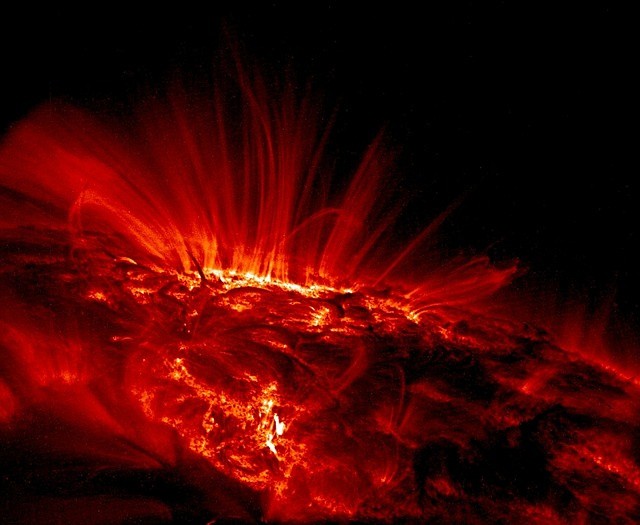NASA just announced that they will be venturing into outer space once more, but the launch will not be earlier than July 1, 2023. NASA proposed "SunRISE" (Sun Radi Interferometer Space Experiment) mission will last for 11 months and hopes to look into the star at the center of our solar system. It will be led by Jet Kasper of University of Michigan in Ann Arbor which will be managed by JPL (NASA's Jet Repulsion Laboratory) in Pasadena, California.
Investigating the space clouds created by sun's radiation

Initially, the main goal of the mission was to understand the activities of the sun. It was later expanded to also investigate the massive space clouds created by the sun's radiation.
The space exploration will launch six CubeSats, which cost a total $62.6 million to plan, design, build, and launch. It will orbit the the star at the center of the solar system like a large radio telescope.
The six solar-powered satellites, about the size of a toaster oven, will operate outside the earth. They will be operating six miles from each other to avoid accidental collisions above the earth's atmosphere.
This will allow NASA to detect the wavelengths of the emitted radiation from the sun which is impossible to do from the earth's surface. The CubeSats will also observe the low frequencies emitted by the sun, creating 3D maps showing where the giant particle emissions are coming from.
The information that will be gathered will be sent back to earth which will then be received by NASA's Deep Space Network. This will help our space rangers in their current and future exploratory missions. Astronauts will receive a warning if a massive radiation emission is detected that will prevent unnecessary accidents in space.
These massive solar flares can reduce our earth's protective layer. Why?

One may think that since solar flares are in outer space, those on the earth's surface have nothing to worry about. But that's not at all true. According to a team of scientists at the National Space Institute at the Technical Universivity of Denmark, these large solar flares create massive space clouds that will affect earth's protective layer and cloud covering. This was stated on their study that was gathered from almost 25 years of space observation.
"Earth is under constant bombardment by particles from space called galactic cosmic rays," said Jacob Svensmark, the lead author. "Violent eruptions at the Sun's surface can blow these cosmic rays away from Earth for about a week."
"Our study has shown that when the cosmic rays are reduced in this way there is a corresponding reduction in Earth's cloud cover. Since clouds are an important factor in controlling the temperature on earth, our results may have implications for climate change," Svensmark explained.
These solar flares and massive space clouds will have a long term-effect on our atmosphere which may result in the sudden rise of temperatures on some parts of the planet. The reseacher stated that these abrupt temperature changes may take hundred of years, but one large emission of radiation from the sun could destroy life on the planet. So let's get studying.
Also Read: LAST CALL! NASA's Astronaut Applications Ends Tomorrow, March 31; Here's How to Apply




![Most Useful Google Chrome Keyboard Shortcuts You Need to Know to Improve Your Browsing Experience [2024]](https://d.techtimes.com/en/full/449047/most-useful-google-chrome-keyboard-shortcuts-you-need-know-improve-your-browsing-experience-2024.jpg?w=184&h=103&f=476d29fd60df70a67f6679f99a2ca6d0)